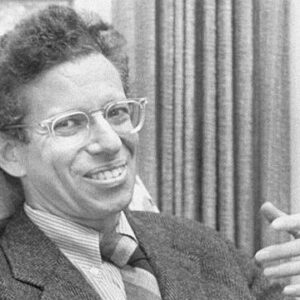Howard Martin Temin was an American geneticist and virologist who shared the Nobel Prize in Physiology or Medicine in 1975 with two other scientists. He was a medical researcher who was instrumental in the discovery of an enzyme that generates complementary DNA (cDNA) from an RNA template, a process known as reverse transcription. His discoveries aided in the understanding of how some cancer cells functioned, and he eventually played a key part in the discovery of the AIDS virus. He was academically inclined from an early age, having been born to a mother who was involved in educational matters. He participated in a summer program at the Jackson Laboratory in Bar Harbor during his high school years, which piqued his interest in biological sciences. At the age of 18, he published his first scientific work, and in 1955, he graduated from Swarthmore College with a bachelor’s degree in biology and a minor in biology in the honors program. He began a career in research after receiving his doctorate from the California Institute of Technology, during which time he made significant contributions to cancer research. He discovered reverse transcriptase on his own, which is one of the most important medical discoveries of the contemporary period. The cancer researcher, in an unfortunate twist of fate, was diagnosed with the disease and died of it at the age of 59.
Childhood and Adolescence
Howard Martin Temin was born to Jewish parents in Philadelphia on December 10, 1934. Annette Lehman, his mother, was an activist who was active in educational issues, and Henry Temin, his father, was an attorney. Howard was the younger of two brothers.
He participated in the Jackson Laboratory’s Summer Student Program in Bar Harbor as a student at Central High School in Pennsylvania, where he demonstrated an exceptional talent for science. He also spent a summer in Philadelphia at the Institute for Cancer Research.
He enrolled at Swarthmore College in 1951 and received his bachelor’s degree in 1955, majoring and minoring in biology as part of the honors program. He subsequently went on to the California Institute of Technology in Pasadena to study experimental embryology. After a few months, he switched his concentration to animal virology and enrolled as a graduate student in Professor Renato Dulbecco’s lab.
Professor Max Delbrück and Dr. Matthew Meselson, both at the institute, had a big influence on him. Temin received his Ph.D. in animal virology in 1959 and worked as a postdoctoral fellow in Professor Dulbecco’s lab for another year.
The career of Howard Martin Temin
In 1960, he was hired as an Assistant Professor at the University of Wisconsin-McArdle Madison’s Laboratory for Cancer Research. He began working on the groundbreaking study that led to the development of the DNA provirus theory here.
He advanced through the ranks at Wisconsin Alumni Research Foundation Professor of Cancer Research, Associate Professor, Full Professor, and Wisconsin Alumni Research Foundation Professor of Cancer Research over the years. In 1974, he was named Professor of Viral Oncology and Cell Biology by the American Cancer Society.
He focused his research in the 1960s on the Rous sarcoma virus. His research on the control of multiplication of uninfected and Rous sarcoma virus-infected cells in culture led to the discovery of reverse transcriptase (RT), an enzyme that converts an RNA template into complementary DNA (cDNA).
His discovery was first panned by notable academics since it went against molecular biology’s core dogma, which holds that DNA gets transcribed into RNA, which is subsequently translated into proteins. Around the same time, another scientist, David Baltimore, extracted RT from two RNA tumor viruses independently, and the concept of RT gained traction.
Temin shared a Nobel Prize in Physiology or Medicine in 1975 for his findings. Outside of research, his heightened status as a globally known scientist prompted him to become more involved in the scientific community.
He joined the National Institute of Health’s director’s advisory board in 1979. (NIH). In the same year, he was appointed to the recombinant DNA advisory committee’s human gene therapy subgroup. He was a member of the National Academy of Sciences and a fellow of the American Academy of Arts and Sciences.
Major Projects of Howard Martin Temin
Temin was the first to discover reverse transcriptase, an enzyme that converts an RNA template into complementary DNA (cDNA) through a process known as reverse transcription. His concept of reverse transcription drew a lot of criticism at first because it went against molecular biology’s basic premise. With time, he received acclaim for this crucial finding, which is now of enormous importance in medical study.
Achievements & Awards
For his work leading to the discovery of reverse transcription, he received the NAS Award in Molecular Biology in 1972.
The Nobel Prize in Physiology or Medicine was shared by Howard Martin Temin, David Baltimore, and Renato Dulbecco in 1975 “for their findings of the interaction between tumor viruses and the genetic material of the cell.”
Personal History and Legacy
Rayla Greenberg, a medical geneticist, and Howard Martin Temin married in 1962 and had two children.
He was a nonsmoker and an outspoken opponent of tobacco. He was diagnosed with adenocarcinoma, a kind of lung cancer that is not caused by smoking. He remained active for as long as his health permitted, passing away on February 9, 1994.
In 1998, the Howard M. Temin Path around Lake Mendota at UW–Madison was renamed in his honor.
Estimated Net Worth
The estimated net worth of Howard Martin Temin is unknown.


